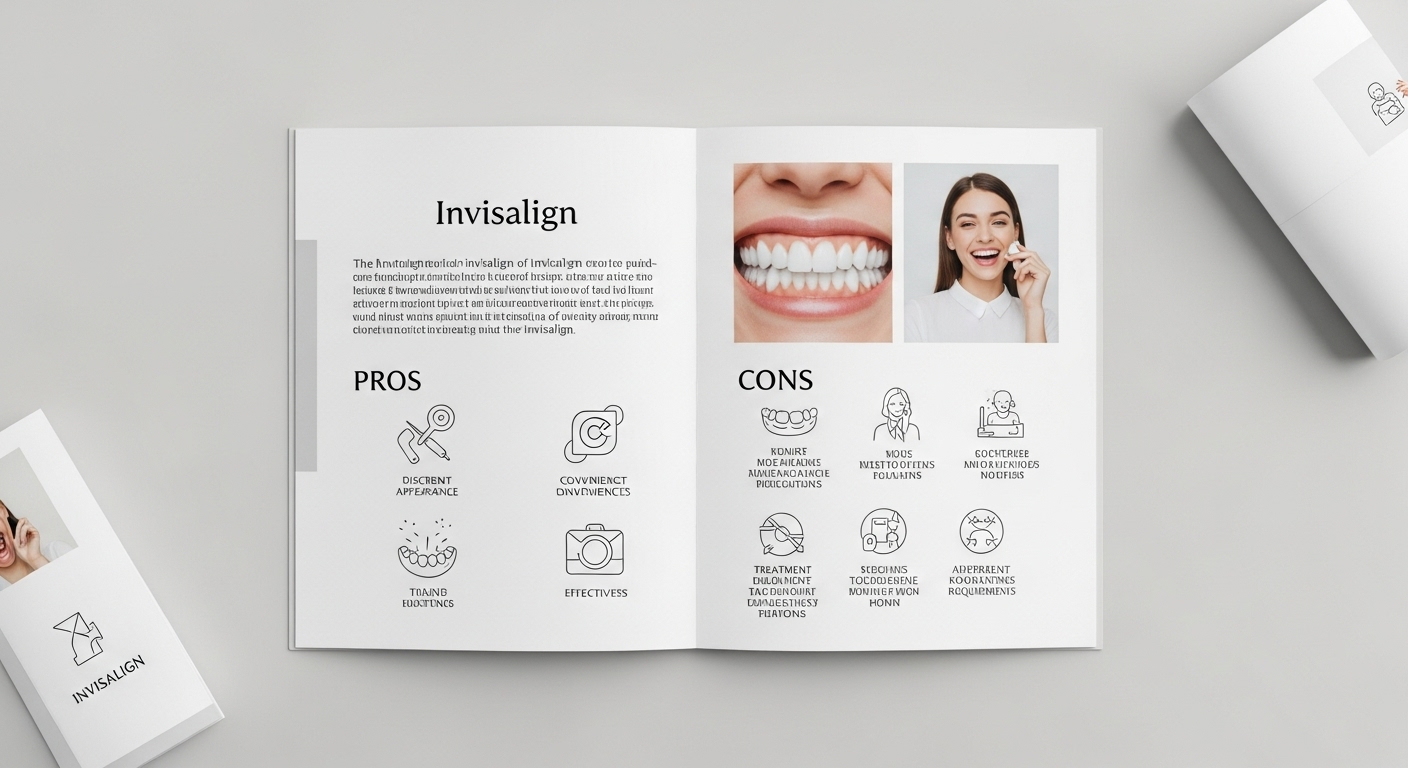Invisalign Pros and Cons: A Breakdown for New Yorkers
Invisalign is a leading orthodontic solution in New York, but is it the right choice for you? To make an informed decision, it’s crucial to understand its powerful advantages and its specific requirements. Here is an objective breakdown to help you weigh the pros and cons against your lifestyle.
The Major Pros of Invisalign Treatment
Invisalign's success is built on benefits that align perfectly with a modern, professional lifestyle.
Pro: Superior Aesthetics & Discretion
This is the number one advantage. The aligners are made of a transparent medical-grade plastic, making them nearly invisible. For adults in professional settings, this means you can straighten your teeth without broadcasting it during meetings or social events. You can watch your smile improve without the look of traditional braces.
Pro: Freedom and Comfort in Your Daily Life
The aligners are fully removable. This provides two key freedoms:
- No Food Restrictions: You can continue to enjoy everything from New York pizza to bagels. Simply remove your aligners before eating, and brush your teeth before putting them back in.
- Better Oral Hygiene: Maintaining your dental health is easy. You can brush and floss normally, without having to navigate around wires and brackets.
- Physical Comfort: The smooth plastic aligners are custom-trimmed to your gum line, eliminating the irritation to cheeks and lips common with metal braces.
Pro: Predictable Results and Modern Technology
Invisalign is a high-tech process. Your treatment is planned digitally with the ClinCheck® 3D simulation, allowing you to see the projected outcome before you even start. This precise planning leads to highly predictable and efficient tooth movements, often resulting in fewer and shorter office visits—a major plus for a busy schedule.
The Cons and Considerations to Keep in Mind
No treatment is without its trade-offs. Invisalign's flexibility comes with responsibilities that are essential to understand.
Con: The Lifestyle & Discipline Trade-Off
This is the most significant "con." The success of your treatment is entirely in your hands.
- Strict 22-Hour Wear-Time: To be effective, aligners must be worn 20-22 hours a day. This requires discipline, especially when you're out for long dinners or events.
- Constant Removal/Insertion: You must remove your aligners for everything you consume besides cool water. This means managing them during coffee breaks, lunches, and snacks, which can feel like a hassle.
- Potential for a Temporary Lisp: Some people experience a slight lisp for the first few days as their tongue adjusts. This typically resolves quickly with practice but can be a concern for those who speak publicly.
Con: The Realities of Effective Treatment
To make Invisalign as effective as braces, certain "add-ons" are often necessary:
- Attachments: These small, tooth-colored bumps are often needed to give the aligners grip for complex movements. They make the system slightly more visible.
- Elastics: Just like with braces, rubber bands may be required to correct your bite, which temporarily reduces the treatment's discretion.
Con: Cost and Treatment Limitations
- The Cost: Invisalign is typically priced similarly to ceramic braces and can be more expensive than traditional metal braces.
- Lifelong Retention is a Must: This is true for all orthodontic treatments, not just Invisalign. You will need to wear a retainer nightly after treatment to protect your investment and maintain your results.
Conclusion: The Choice Is Yours
Choosing Invisalign is a balance between its undeniable benefits in aesthetics and convenience and its demands for personal discipline. For many New Yorkers, the ability to straighten their teeth discreetly is well worth the effort. The best approach is to have a frank discussion with your orthodontist about your lifestyle and priorities.
Ready to Discuss Your Options in NYC?
Use our interactive map to find a certified orthodontist in your neighborhood for a personalized consultation.
Find a Provider in NYC
